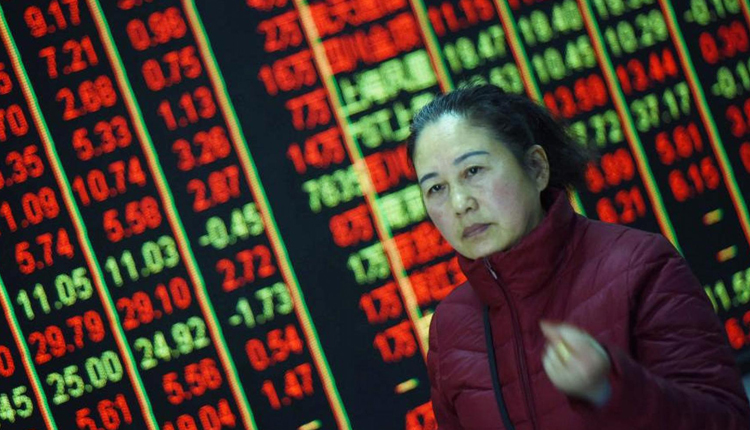Asian stocks fell in the afternoon on the back of the Dow Jones Industrial Average falling by more than 600 points overnight.
Markets in Greater China remained mixed by the conclusion of the morning session with Hong Kong’s Hang Seng Index slipped 0.1 percent despite index heavyweight Tencent recovering from its earlier losses to see gains of 0.37 percent.
Over on the mainland, however, stocks saw a broad recovery as the Shanghai composite gained 0.11 percent while Shenzhen was up 0.769 percent.
In other major Asian markets, Japan’s Nikkei 225 fell 2.22 percent in afternoon trade while the Topix index saw losses of 2.12 percent. Shares of Apple supplier Japan Display plunged 7.62 percent after the company reported its sixth straight quarterly operating loss and lowered its outlook, according to Reuters.
The losses spilled over to South Korea, where the Kospi shed 0.82 percent. Shares of industry heavyweights saw a sharp pullback, as Samsung Electronics lost 2.1 percent while SK Hynix dropped 4.16 percent.
The ASX 200 fell 1.71 percent, with almost all sectors in negative territory. Energy stocks fell nearly 2 percent while the heavily weighted financial subindex saw losses of 2.25 percent.
Shares of Australia’s so-called Big Four banks saw sharp declines: Australia and New Zealand Banking Group shed 1.22 percent, Commonwealth Bank of Australia lost 1.32 percent and National Australia Bank was lower by 1.77 percent. Westpac saw the largest percentage decline among the four, falling by 5.52 percent.
“The topside optimism the markets experienced after getting through the US midterms relatively unscathed has quickly reverted back to concern over trade issues between the US and China and the affect that tariffs and protectionist policies have had on overall global growth,” said Rakuten Securities Australia in a morning note.
Wall Street sell-off
In overnight market action on Wall Street, the Dow Jones Industrial Average dropped 602 points to close at 25,387.18 while the Nasdaq Composite declined 2.8 percent to 7,200.87 by the closing bell. The S&P 500 also saw losses of 2 percent to close at 2,726.22.
In late-afternoon trading, the major indexes hit their lows of the day after Bloomberg News reported the White House was circulating a draft report on auto tariffs.
Axios reported that President Donald Trump thinks threatening more tariffs on overseas-made cars is his best negotiating tactic on trade. The report said Trump has told aides he was able to get a better trade deal with Canada because he threatened Prime Minister Justin Trudeau with levies on cars made in Canada.
Trump has considered slapping a 25 percent charge on cars made outside the U.S. since earlier in the year.
The Axios report comes ahead of a highly-anticipated meeting between Trump and Chinese President Xi Jinping at the upcoming G-20 summit.
Currencies and oil
The U.S. dollar index, which tracks the greenback against a basket of its peers, was at 97.487 after its rally from around the 97 handle yesterday.
The dollar’s recent strength has raised concerns among some investors over its impact on earnings growth.
Meanwhile, the Japanese yen, which is widely seen as a safe haven currency, was at 113.98 against the greenback after strengthening from levels above 114.1 in the previous session. The Australian dollar traded at $0.7212 after sliding from levels above $0.723 yesterday.
In the oil markets, the U.S. crude futures continued to see declines after posting its 11th straight loss on Monday — its longest streak on record. The U.S. crude futures contract declined 1.28 percent in the afternoon of Asian trade at $59.16 per barrel. The global benchmark Brent crude futures contract also declined 0.91 percent at $69.48 per barrel.
Source: Reuters



